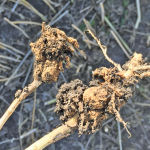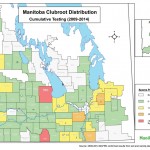It appears clubroot is a fact of life for Manitoba farmers — but it’s still a long ways from the crisis seen in Alberta. Clubroot symptoms have only been reported in eight Manitoba fields to date; two in 2013 and six in 2015. No Manitoba fields surveyed in 2016 showed any clubroot symptoms. Delving a













